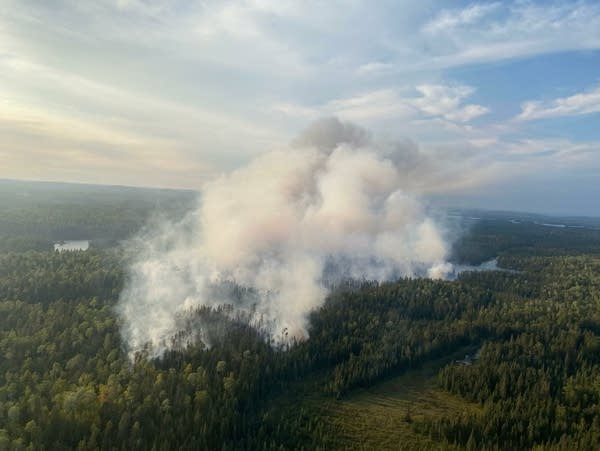Boundary Waters Canoe Area Wilderness closed to visitors

Go Deeper.
Create an account or log in to save stories.
Like this?
Thanks for liking this story! We have added it to a list of your favorite stories.
Updated: 9:45 p.m.
Superior National Forest officials have closed the entire Boundary Waters Canoe Area Wilderness to visitors for at least the next week, amid increasingly volatile wildfire conditions and concerns about limited resources to keep people safe.
The closure order, effective Saturday, "is due to active and increasing fire activity, extreme drought (and) limited resources," the Forest Service reported. Wilderness rangers were starting to notify and “sweep” people from the wilderness on Saturday afternoon; the Forest Service reported rangers were using canoes and floatplanes to reach lakes and notify campers across the vast, 1-million-acre wilderness.
In a sign of the danger, one wildfire burning within the BWCA — the John Ek fire about 10 miles northwest of Sawbill Lake — ballooned from 3 acres to 1,500 acres on Friday, the Forest Service reported.
"With continued fires and a shortage of firefighting resources, these closures allow firefighters to focus on existing fires or new starts without worrying about public safety," the Forest Service said.
Turn Up Your Support
MPR News helps you turn down the noise and build shared understanding. Turn up your support for this public resource and keep trusted journalism accessible to all.
Permits are canceled from Saturday through at least Aug. 27, and permit holders will be reimbursed.
“We did not make this decision lightly. We understand it will have significant impacts on business and our visitors,” the Forest Service said.
Efforts are now underway to reach paddlers and hikers across the vast wilderness.
"Currently we have wilderness rangers paddling in the Boundary Waters to sweep people from the areas, and we're trying to do a systematic sweep. So we're starting with the east side — so the Tofte and the Gunflint districts, due to the John Ek fire," Superior National Forest spokesperson Joanna Gilkeson told MPR News on Saturday. "With that kind of growth, we need to need to get people out of there, to make sure that they're safe."
The Forest Service said it used floatplanes to reach some lakes near the John Ek fire.
“All visitor groups currently in the BWCAW no matter if they entered this morning or several days ago will be required to exit the Wilderness in a safe and orderly manner once they are notified by a (Forest Service) crew, their outfitter/guide, permit cooperator business, or camp," the Forest Service said in an update Saturday night. "These are unfortunate circumstances and we know that visitor trip experiences and businesses are affected but the safety of our visitors and firefighters is our highest priority. The fire danger is real and immediate during unprecedented drought conditions."
After eastern areas are cleared, Gilkeson said, they’ll move to western parts of the BWCA — though she noted that a large closure order that’s been in place north and northwest of Ely for more than a month, due to concerns about wildfires just across the border in Ontario's Quetico Provincial Park, means there are fewer visitors in the western reaches of the wilderness.
Quetico closed its entire backcountry to travelers earlier this week.
The rapid expansion of the John Ek fire on Friday was in a "narrow cigar shape" footprint from John Ek Lake to the southeast corner of Elton Lake, the Forest Service reported.
The nearby Whelp Fire, about 4 miles northwest of Sawbill Lake, grew to 50 acres on Friday.
Adding to the concern was the fact that firefighting crews haven’t been able to reach either fire.
“Ground suppression activities are still not possible due to the difficult access and firefighter safety concerns,” the Forest Service reported Saturday. “Fire-suppressing aircraft continued to drop water to try and limit the spread.”
The BWCA was closed to overnight trips early during the COVID-19 pandemic. And WTIP Radio in Grand Marais reported that a full closure of the BWCAW has happened before — during a very dry period in 1976.
The closure comes as hundreds of firefighters are battling the 9,000-acre Greenwood Fire just south of the BWCA.
The Forest Service had previously referred to the John Ek Fire as the “John Elk” Fire; both names have been used to refer to the lake near where the fire started. The Forest Service said Saturday night that after a discussion about what name to use, they opted to change to “John Ek.”


